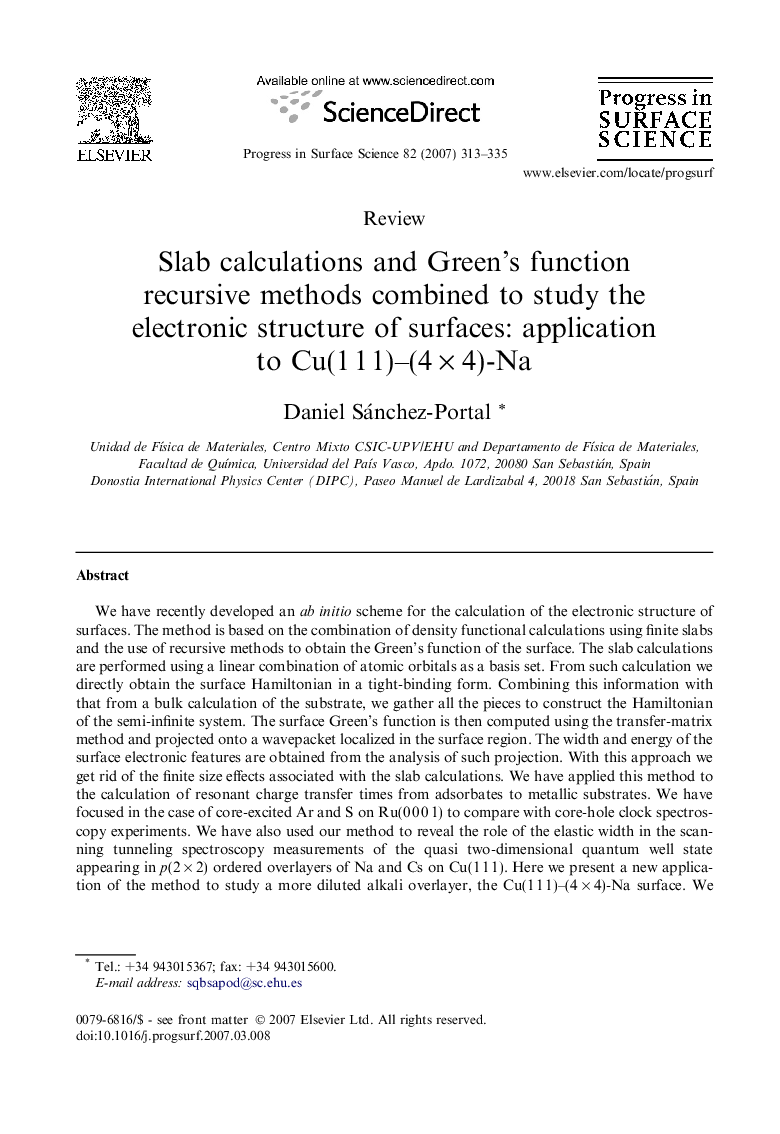| Article ID | Journal | Published Year | Pages | File Type |
|---|---|---|---|---|
| 5420134 | Progress in Surface Science | 2007 | 23 Pages |
Abstract
We have recently developed an ab initio scheme for the calculation of the electronic structure of surfaces. The method is based on the combination of density functional calculations using finite slabs and the use of recursive methods to obtain the Green's function of the surface. The slab calculations are performed using a linear combination of atomic orbitals as a basis set. From such calculation we directly obtain the surface Hamiltonian in a tight-binding form. Combining this information with that from a bulk calculation of the substrate, we gather all the pieces to construct the Hamiltonian of the semi-infinite system. The surface Green's function is then computed using the transfer-matrix method and projected onto a wavepacket localized in the surface region. The width and energy of the surface electronic features are obtained from the analysis of such projection. With this approach we get rid of the finite size effects associated with the slab calculations. We have applied this method to the calculation of resonant charge transfer times from adsorbates to metallic substrates. We have focused in the case of core-excited Ar and S on Ru(0Â 0Â 0Â 1) to compare with core-hole clock spectroscopy experiments. We have also used our method to reveal the role of the elastic width in the scanning tunneling spectroscopy measurements of the quasi two-dimensional quantum well state appearing in p(2Â ÃÂ 2) ordered overlayers of Na and Cs on Cu(1Â 1Â 1). Here we present a new application of the method to study a more diluted alkali overlayer, the Cu(1Â 1Â 1)-(4Â ÃÂ 4)-Na surface. We present results for the relaxed geometries, binding energies, work function change and the position and width of the 3s Na resonance.
Related Topics
Physical Sciences and Engineering
Chemistry
Physical and Theoretical Chemistry
Authors
Daniel Sánchez-Portal,
